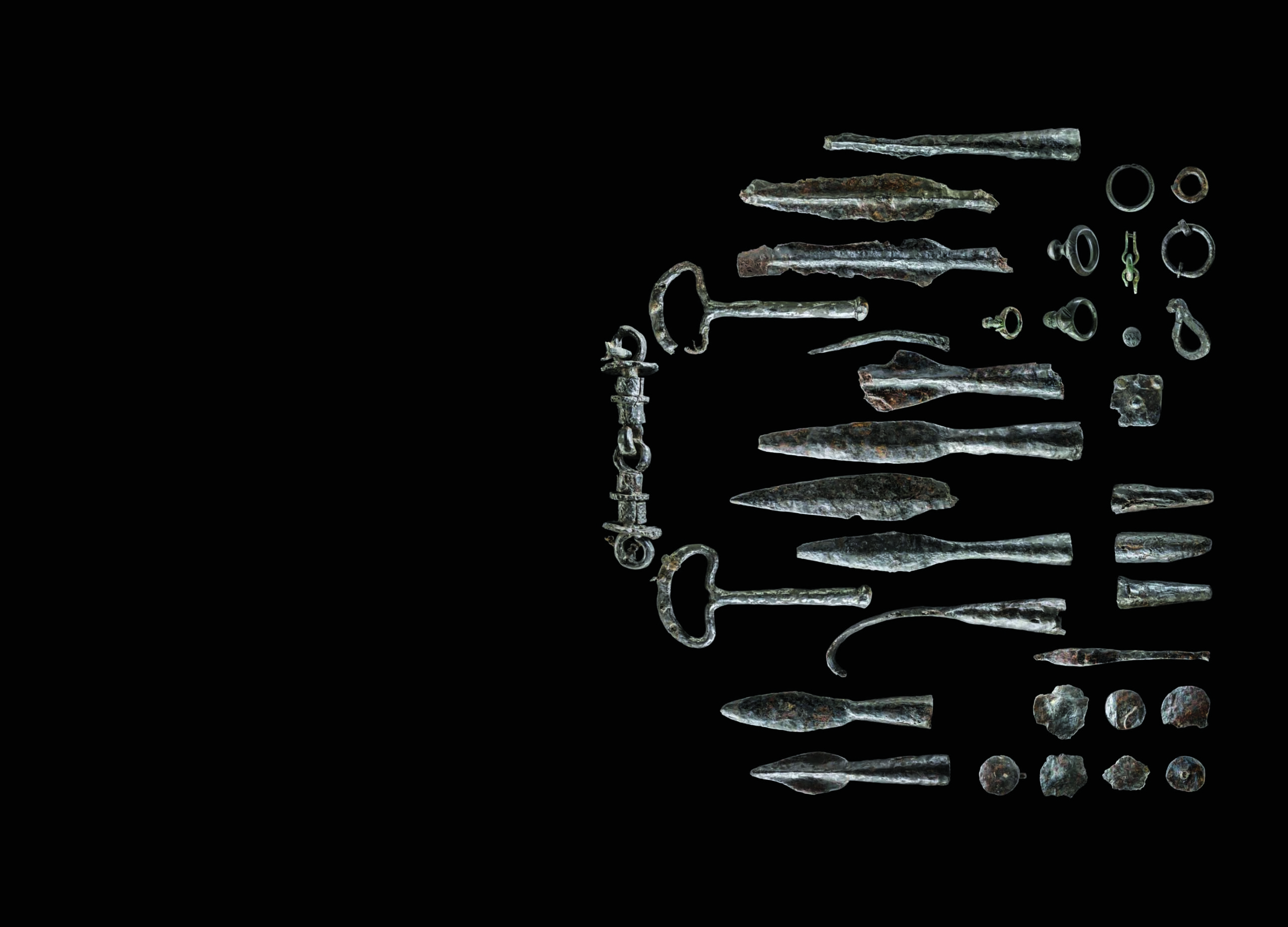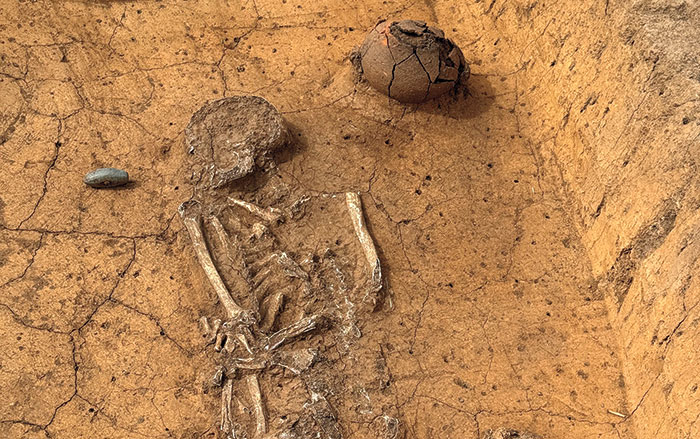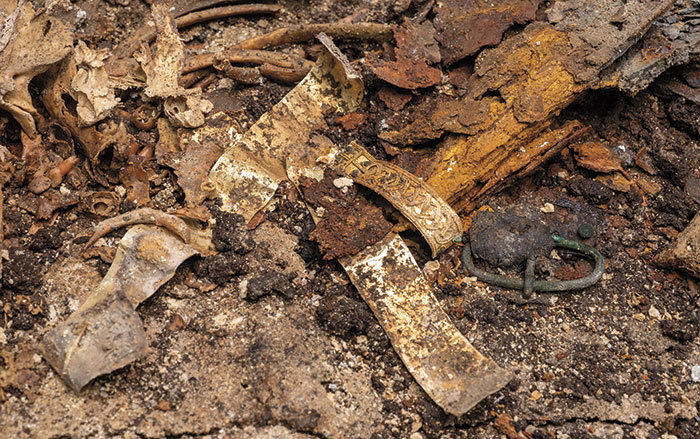
BRANDENBURG, GERMANY—Live Science reports that Wolfgang Herkt, a volunteer with the Brandenburg State Heritage Management and Archaeological State Museum (BLDAM), discovered a cache of 41 Celtic coins in northeastern Germany, in an area where Celts did not live some 2,000 years ago. After Herkt found ten coins, he alerted researchers at the BLDAM, who recovered another 31. Such curved gold coins are called “rainbow cups,” referring to the popular legend of a pot of gold at the end of a rainbow, explained numismatist Marjanko Pilekić of Goethe University. By comparing the imageless coins in the hoard with rainbow cups from other sites in southern Germany, Pilekić was able to date them to between 125 and 30 B.C. The coins are thought to have reached Brandenburg through trade networks and deposited all at once. “The find extends the distribution area of these coin types once again,” Pilekić said. To read about gold artifacts found in a Celtic coin cache, go to "Hidden in a Coin Hoard."










